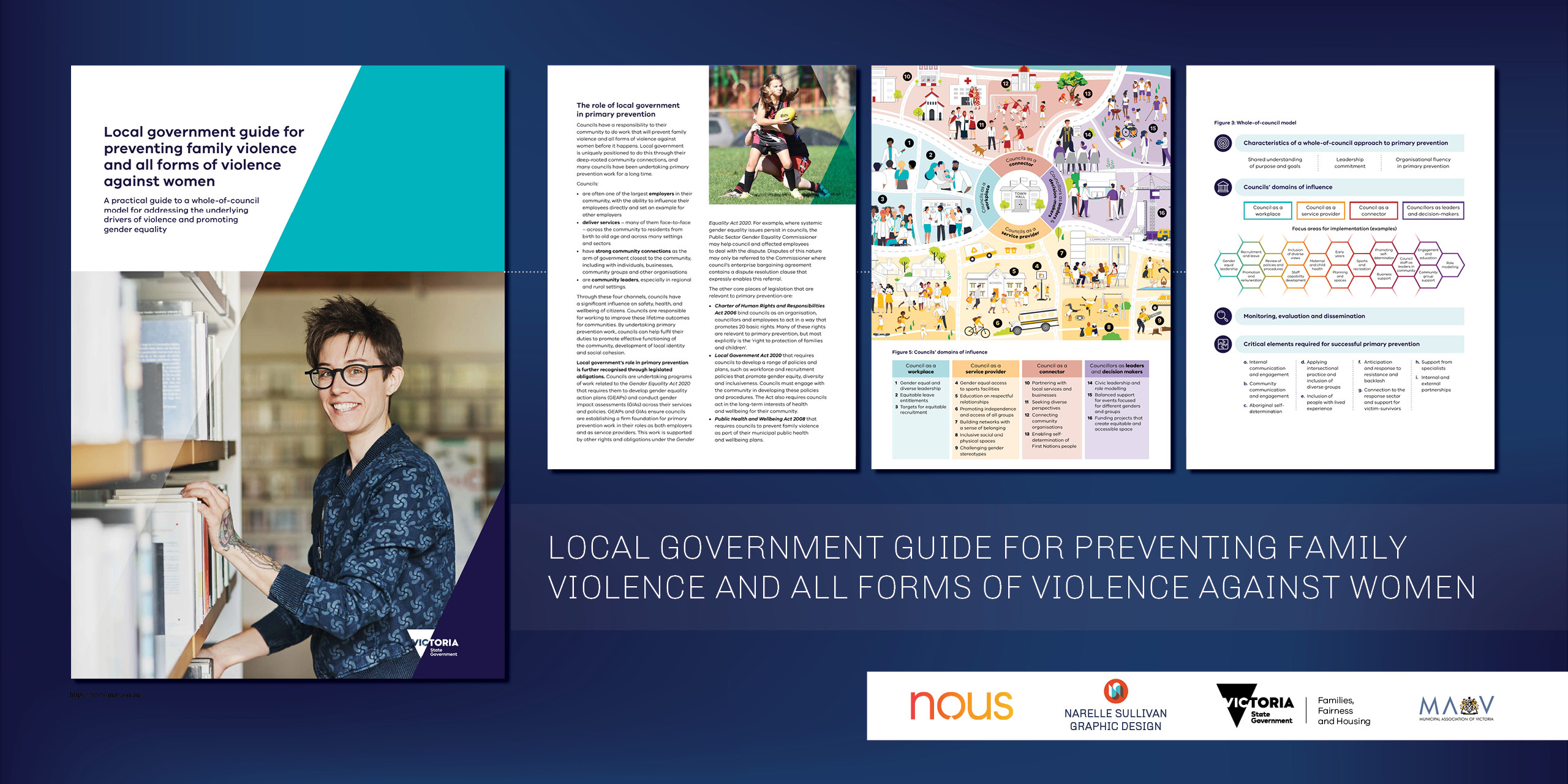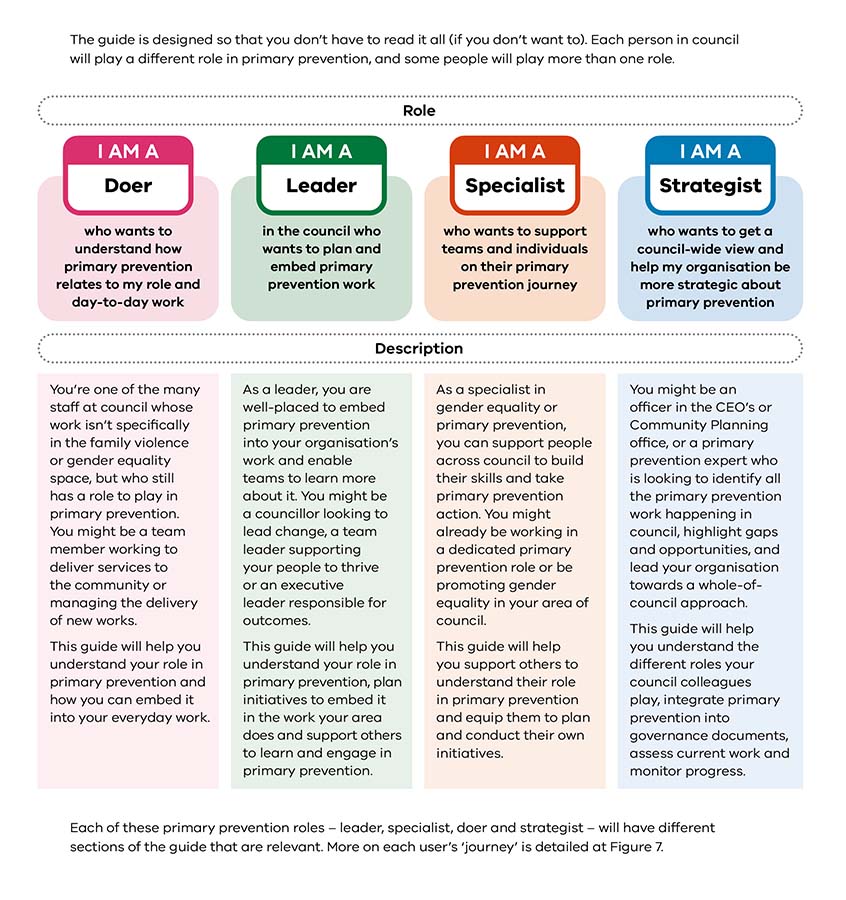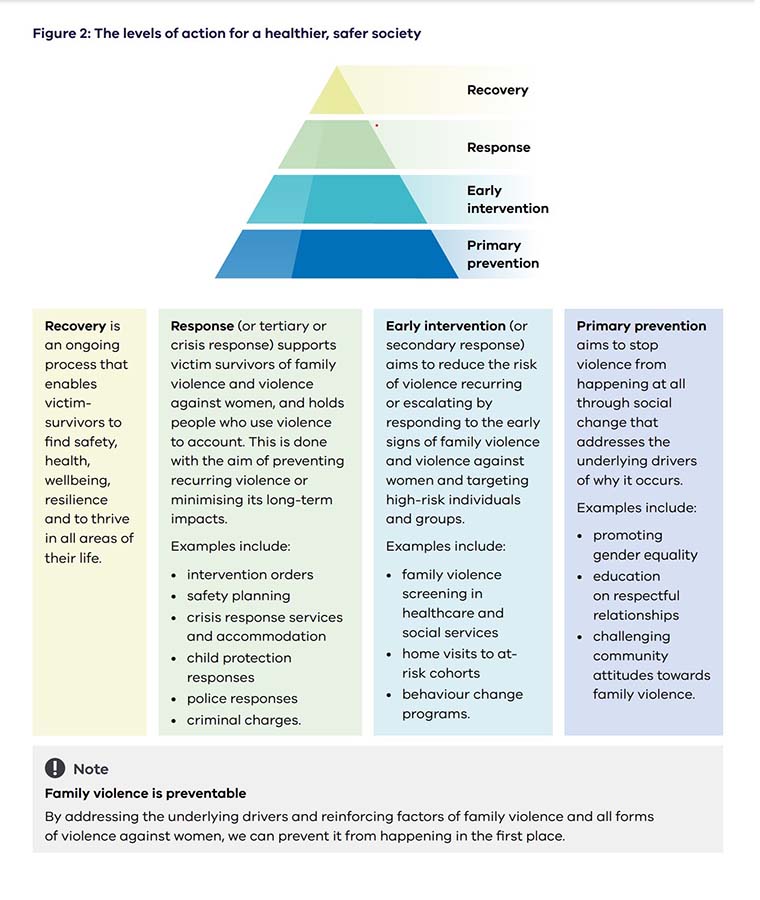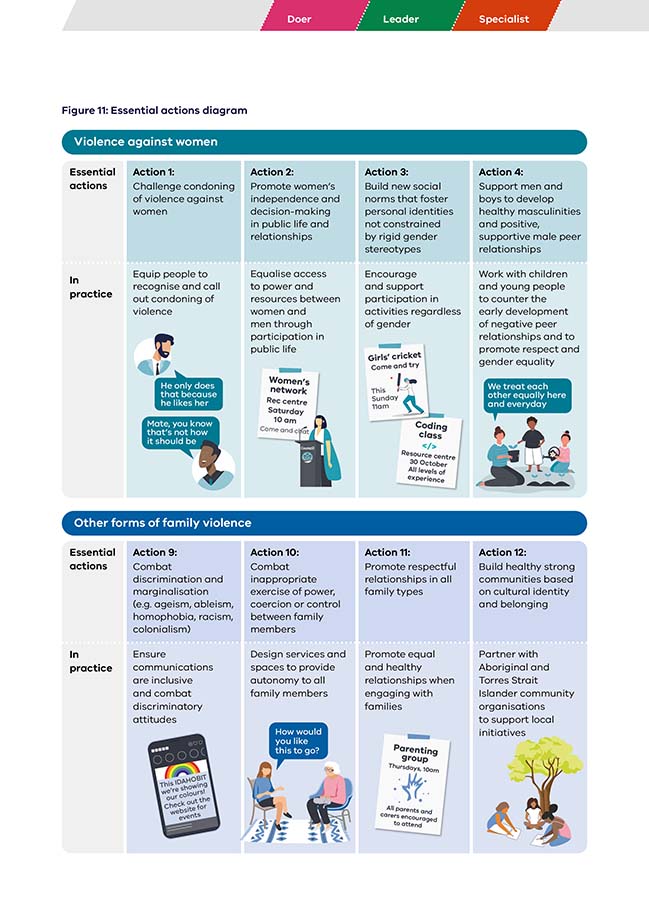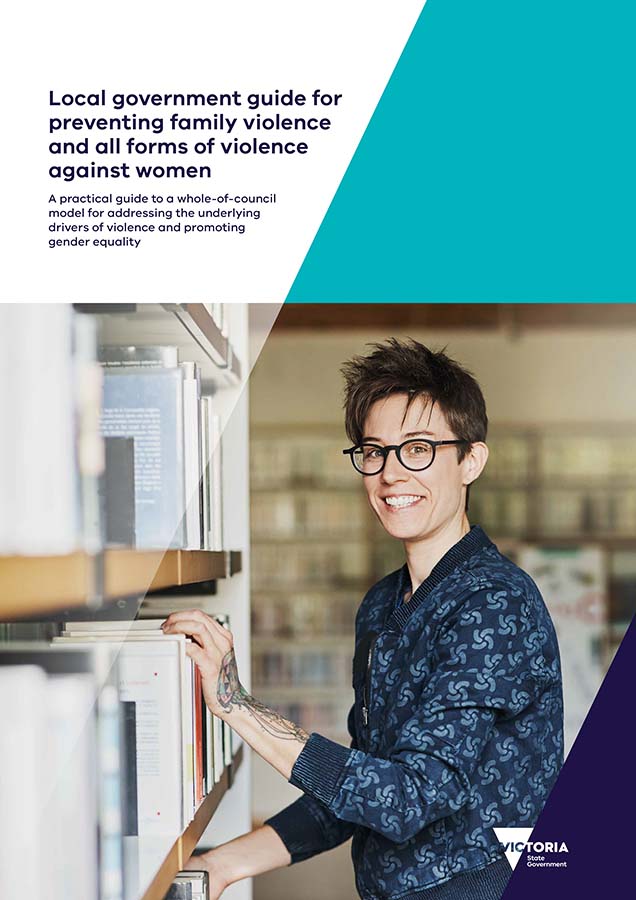Nous' co-design approach to developing the Local Government Guide for Preventing Family Violence and All Forms of Violence Against Women involved significant engagement with council staff and partners to ensure that those who would ultimately use the tool contributed directly to its design.
We developed an initial report on the current state of primary prevention in local government and the opportunities for councils to incorporate prevention practice into their daily work. We did this through consultations with councils, women's health services, peak bodies and public health experts. A whole-of-council model identified the four 'domains of influence' for primary prevention: workplace, service provider, community connector, and councillors as leaders and decision-makers.
Next, we worked directly with councils to convert the model into practical guidance for councils’ everyday work. Council staff, women’s health services and other key stakeholders shaped the guide through an intensive five-week co-design process, supplemented with sector subject matter expert workshops. We tested the final guide with a range of stakeholders to ensure it clearly communicated the model, provided practical guidance, would drive consistency and was flexible enough to support all councils. The testing identified that, to complement the full guide, councils would benefit from a summary version to engage councillors and senior leaders in conversations about primary prevention and help them empower their council staff to effectively utilise the guide in their work.
Following this, DFFH commissioned Narelle Sullivan to complete the guide and summary guide’s visual design, which drew on key concepts developed during the co-design process, reflected Victorian Government branding and supported the final products’ usability.

